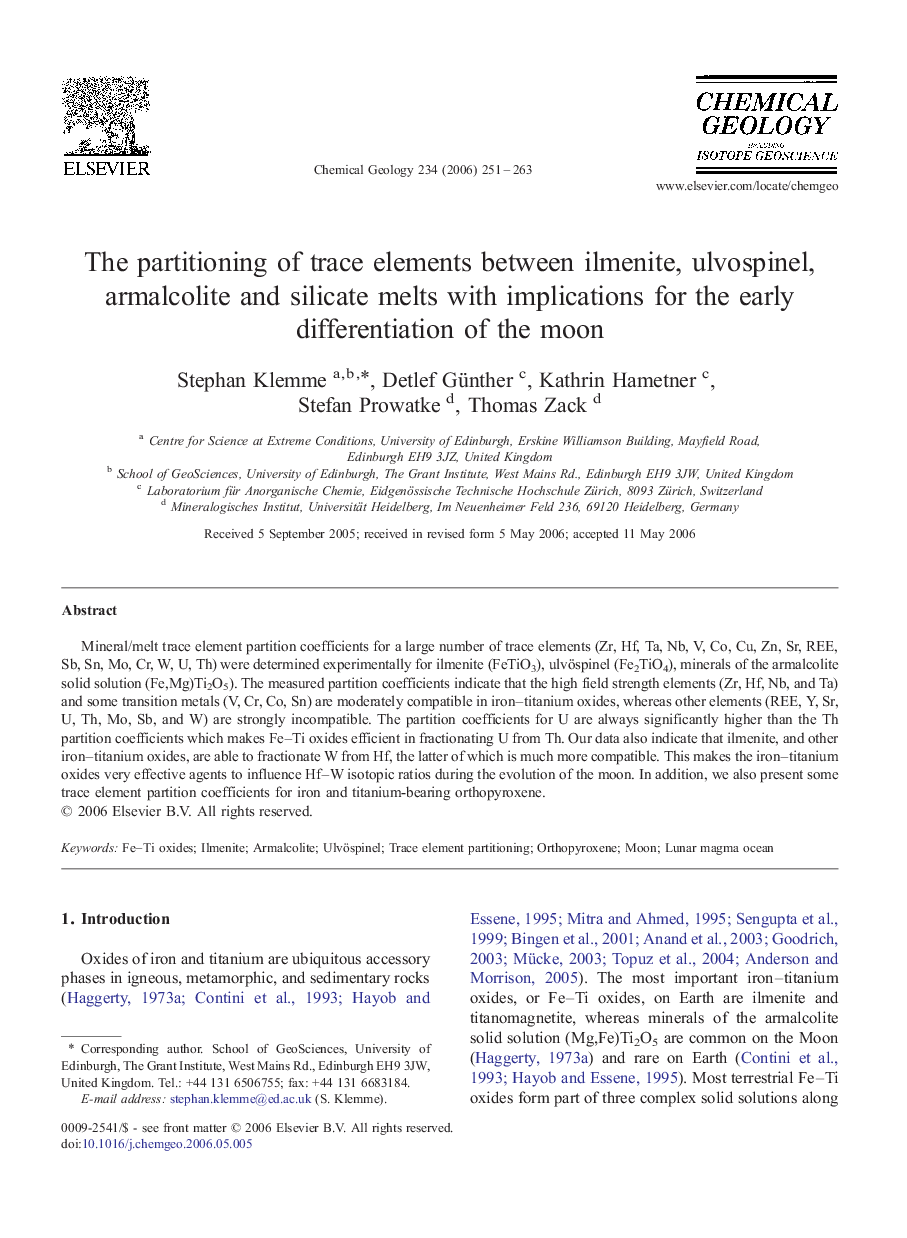| Article ID | Journal | Published Year | Pages | File Type |
|---|---|---|---|---|
| 4701319 | Chemical Geology | 2006 | 13 Pages |
Mineral/melt trace element partition coefficients for a large number of trace elements (Zr, Hf, Ta, Nb, V, Co, Cu, Zn, Sr, REE, Sb, Sn, Mo, Cr, W, U, Th) were determined experimentally for ilmenite (FeTiO3), ulvöspinel (Fe2TiO4), minerals of the armalcolite solid solution (Fe,Mg)Ti2O5). The measured partition coefficients indicate that the high field strength elements (Zr, Hf, Nb, and Ta) and some transition metals (V, Cr, Co, Sn) are moderately compatible in iron–titanium oxides, whereas other elements (REE, Y, Sr, U, Th, Mo, Sb, and W) are strongly incompatible. The partition coefficients for U are always significantly higher than the Th partition coefficients which makes Fe–Ti oxides efficient in fractionating U from Th. Our data also indicate that ilmenite, and other iron–titanium oxides, are able to fractionate W from Hf, the latter of which is much more compatible. This makes the iron–titanium oxides very effective agents to influence Hf–W isotopic ratios during the evolution of the moon. In addition, we also present some trace element partition coefficients for iron and titanium-bearing orthopyroxene.
